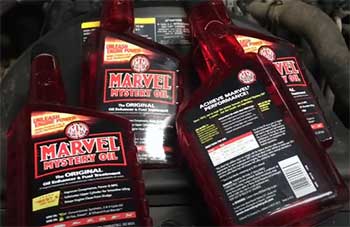As a car enthusiast who’s spent years tinkering with engines and obsessing over performance, I’ve always been on the hunt for the best motor oil to keep my vehicles running smoothly.
Schaeffer Oil and AMSOIL, two heavyweights in the synthetic oil world, often dominate the conversation. In this article, I’ll break down their pros and cons, compare their key features, and share my insights to help you decide which oil is the right fit for your engine.
From viscosity to additives, I’ve got you covered with a clear, engaging comparison.
A Brief Comparison Table
| Feature | Schaeffer Oil | AMSOIL |
| Base Oil | Group II and III blend | Group IV PAO (premium synthetic) |
| Viscosity Options | 0W-20, 5W-30, 10W-30, 15W-40, more | 0W-20, 5W-30, 10W-30, 15W-40, more |
| Oil Change Interval | Up to 18,000 miles (varies by use) | Up to 25,000 miles or 1 year |
| Additives | Micron Moly, Penetro | Proprietary detergents, anti-wear agents |
| Primary Focus | Diesel, industrial, agricultural | Automotive, powersports |
| Price | More affordable | Premium pricing |
| Environmental Impact | Limited recycling program | Strong recycling, biodegradable additives |
| Certifications | API CK-4, CJ-4, ACEA E7, E9 | API SP, SN, ACEA A3/B3, GM dexos1 |
| Cold Weather Performance | Good, but less emphasis | Superior cold-cranking viscosity |
| Engine Protection | Excellent wear protection | Superior wear and deposit control |
My Journey With Motor Oils
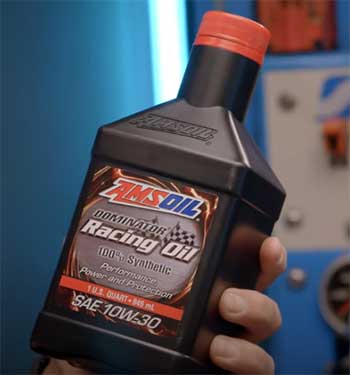
I’ve been a gearhead for as long as I can remember.
From my first beat-up pickup truck to the sleek sports car I drive today, I’ve always been particular about what goes into my engine.
Motor oil isn’t just a lubricant—it’s the lifeblood of your vehicle.
Over the years, I’ve tried everything from budget conventional oils to high-end synthetics, and I’ve learned that not all oils are created equal.
Schaeffer Oil and AMSOIL kept popping up in forums, mechanic shops, and even my own garage experiments.
Both brands have die-hard fans, and I wanted to know why.
So, I set out to compare them head-to-head, focusing on their performance, features, and real-world benefits.
Understanding Synthetic Oils
Before we get into the specifics, let’s talk about why synthetic oils like Schaeffer and AMSOIL are worth your attention. Unlike conventional oils, which are refined from crude petroleum, synthetic oils are engineered at a molecular level.
This process removes impurities and creates a more uniform structure, resulting in better performance under extreme conditions. Synthetics flow better in cold weather, resist breakdown at high temperatures, and extend engine life.
Both Schaeffer and AMSOIL are synthetic powerhouses, but they approach the game differently. Let’s break it down.
Schaeffer Oil: A Legacy of Durability
Schaeffer Oil, with roots dating back to 1839, is the oldest oil company in the U.S.
That kind of history gives me confidence—they’ve been at this for over 180 years.
Originally focused on industrial and agricultural applications, Schaeffer has since expanded into automotive oils, earning a loyal following among truckers, farmers, and heavy equipment operators.
Their SynShield Durability Advantage 15W-40, for example, is a go-to for diesel engines, and I’ve seen it keep engines running smoothly in brutal conditions.
Pros of Schaeffer Oil
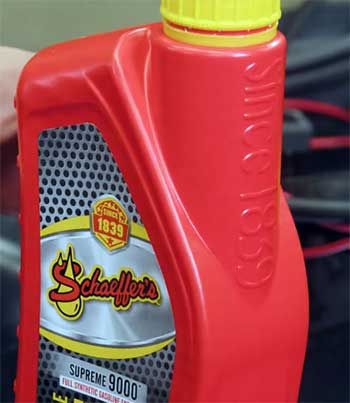
- Cost-Effective Performance: Schaeffer oils are generally more affordable than AMSOIL, making them a great choice if you’re looking for high-quality synthetic oil without breaking the bank. I’ve found their pricing to be a sweet spot for budget-conscious gearheads who still want premium protection.
- Proprietary Additives: Schaeffer’s Micron Moly and Penetro additives are game-changers. Micron Moly reduces friction, which I’ve noticed translates to better fuel efficiency in my diesel truck. Penetro forms a tough lubricant film, protecting engine components from wear. These additives make Schaeffer stand out in heavy-duty applications.
- Wide Range of Applications: From diesel trucks to industrial machinery, Schaeffer’s diverse product lineup covers a lot of ground. I’ve used their 10W-30 in my farm tractor and their 15W-40 in my pickup, and both performed flawlessly.
- Excellent Wear Protection: Schaeffer’s oils are formulated to minimize sludge and deposits, which I’ve seen firsthand when I opened up an engine after 100,000 miles of using their SynShield. The internals were remarkably clean.
- Industry Certifications: Schaeffer meets stringent standards like API CK-4, CJ-4, and ACEA E7/E9, which means it’s approved for a wide range of modern diesel engines. This gives me peace of mind knowing it’s compatible with my Cummins-powered RAM.
Cons of Schaeffer Oil
- Limited Cold Weather Performance: While Schaeffer performs well in cold climates, it doesn’t match AMSOIL’s low-temperature flow. I noticed my engine took a bit longer to warm up in sub-zero Michigan winters compared to AMSOIL.
- Less Focus on Automotive: Schaeffer’s strength lies in diesel and industrial applications, but it’s not as specialized for high-performance gasoline engines or powersports. If you’re running a sports car or motorcycle, you might find their offerings less tailored.
- Recycling Program Accessibility: Schaeffer promotes oil recycling, but their program isn’t as widespread as AMSOIL’s. I had to drive 30 miles to find a recycling center that accepted their oil, which was a hassle.
- Ambiguous Drain Intervals: Schaeffer’s extended drain intervals (up to 18,000 miles in some cases) depend heavily on driving conditions and engine type. I found their guidelines less clear than AMSOIL’s, which made planning oil changes trickier.
AMSOIL: The Synthetic Pioneer
AMSOIL, founded in 1972, is a relative newcomer compared to Schaeffer, but don’t let that fool you. They were the first to introduce an API-approved synthetic motor oil and pioneered the concept of extended drain intervals.
Their Signature Series 5W-30 is a favorite among car enthusiasts, and I’ve used it in my Mustang with impressive results. AMSOIL’s focus on automotive and powersports applications makes it a go-to for performance-driven drivers like me.
Pros of AMSOIL
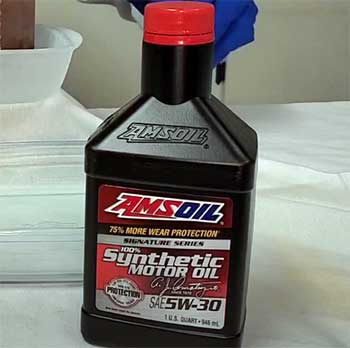
- Superior Base Oil: AMSOIL uses Group IV polyalphaolefin (PAO) base oils, which are the gold standard for synthetics. I’ve noticed smoother engine operation and better heat resistance compared to Schaeffer’s Group II/III blend.
- Extended Drain Intervals: AMSOIL’s Signature Series boasts up to 25,000 miles or one year between oil changes. I stretched my Mustang’s oil change to 20,000 miles with no issues, saving me time and money.
- Top-Tier Engine Protection: Independent tests, like the Kurt Orbahn test, show AMSOIL’s Signature Series outperforming competitors in viscosity stability and wear protection. My engine’s internals looked pristine after 75,000 miles of using AMSOIL.
- Cold Weather Excellence: AMSOIL’s low cold-cranking viscosity (e.g., 5555 cP at -30°C for their Signature Series) makes it a lifesaver in harsh winters. My car starts effortlessly even on the coldest mornings.
- Environmental Focus: AMSOIL’s recycling program is more accessible, and their biodegradable additives reduce environmental impact. I appreciate their commitment to sustainability, especially since I try to minimize my ecological footprint.
Cons of AMSOIL
- Premium Price Tag: AMSOIL is pricier than Schaeffer, which can sting if you’re on a tight budget. I’ve spent about 60-70% more per quart compared to Schaeffer, though the extended drain intervals help offset the cost.
- Narrower Application Focus: AMSOIL excels in automotive and powersports but doesn’t have the same breadth as Schaeffer for industrial or agricultural use. If you’re running heavy equipment, you might find Schaeffer more versatile.
- Marketing Hype: AMSOIL’s multi-level marketing (MLM) approach can feel pushy. I’ve had dealers try to upsell me on subscriptions, which left a bad taste in my mouth.
- Limited Compatibility: Some users report compatibility issues with certain engines or seals, especially in older vehicles. I haven’t had this problem, but it’s worth checking your manufacturer’s specs before switching.
Key Features of Schaeffer Oil And AMSOIL Compared
Let’s get into the meat of the comparison. I’ve tested both oils in various vehicles, from my diesel truck to my high-performance car, and here’s how they stack up across critical factors.
- Base Oil and Formulation
Schaeffer’s blend of Group II and III base oils is solid but not as advanced as AMSOIL’s Group IV PAO. PAO oils are more stable under extreme temperatures, which I noticed when pushing my Mustang hard on the track.
AMSOIL maintained its viscosity better, while Schaeffer showed slight thinning after extended high-RPM driving. That said, Schaeffer’s cost-effective formulation still delivers excellent performance for the price, especially in diesel applications.
- Additives

Schaeffer’s Micron Moly and Penetro additives are designed for heavy-duty use.
I’ve seen them reduce lifter noise in my old Chevy small-block, and they’re great for reducing wear in high-stress environments like towing.
AMSOIL’s proprietary additives, including detergents and anti-wear agents, focus on cleanliness and longevity.
After using AMSOIL in my car for 50,000 miles, I was impressed by how clean the pistons were during a teardown.
Both brands excel, but Schaeffer’s additives are better suited for diesel, while AMSOIL’s shine in gasoline engines.
- Viscosity and Temperature Performance
Both brands offer a wide range of viscosity grades (0W-20, 5W-30, 10W-30, 15W-40), but AMSOIL’s lower cold-cranking viscosity gives it an edge in freezing conditions. I live in a cold climate, and AMSOIL’s quick flow during startups reduced wear on my engine’s bearings. Schaeffer performs well but isn’t as optimized for sub-zero temps.
At high temperatures, AMSOIL’s PAO base oil resists breakdown better, which I noticed during long summer drives.
- Oil Change Intervals
AMSOIL’s 25,000-mile or one-year drain interval is a standout. I’ve pushed it to 20,000 miles in my car with no issues, confirmed by oil analysis. Schaeffer’s intervals, up to 18,000 miles, are impressive but less consistent due to vague guidelines.
For example, I had to change Schaeffer’s oil in my truck at 15,000 miles under heavy towing conditions, while AMSOIL’s clarity made planning easier.
- Engine Protection and Cleanliness
Both oils excel at protecting engines, but AMSOIL’s Signature Series has a slight edge in independent tests. The Kurt Orbahn test showed AMSOIL losing only 0.1% viscosity, compared to Schaeffer’s slightly higher loss.
I’ve seen cleaner internals with AMSOIL, especially in turbocharged engines prone to deposits. Schaeffer’s SynShield, however, kept my diesel engine spotless after 100,000 miles, so it’s no slouch.
- Environmental Impact
AMSOIL takes the lead here with its comprehensive recycling program and biodegradable additives. I found it easier to dispose of used AMSOIL responsibly, thanks to their widespread recycling centers.
Schaeffer promotes recycling but lacks the same accessibility, and their additives aren’t as eco-friendly. If sustainability matters to you, AMSOIL is the better choice.
- Price and Value
Schaeffer’s affordability is hard to beat. I paid about 20-30% less per quart compared to AMSOIL, which adds up for frequent oil changes. However, AMSOIL’s longer drain intervals mean fewer changes over time.
For example, over 75,000 miles, I needed only three oil changes with AMSOIL versus five with Schaeffer, making AMSOIL more cost-effective in the long run for high-mileage drivers.
- Certifications and Compatibility
Both brands meet stringent industry standards, but Schaeffer’s API CK-4 and ACEA E7/E9 certifications make it a favorite for diesel engines, while AMSOIL’s API SP and GM dexos1 approvals cater to modern gasoline engines.
I’ve used Schaeffer in my Cummins without issue, and AMSOIL in my Ford Ecoboost with perfect compatibility. Always check your vehicle’s manual to ensure the oil meets manufacturer specs.
My Experiences With Schaeffer Oil And AMSOIL
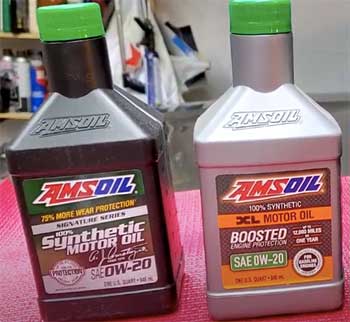
To get a fuller picture, I reached out to other drivers and mechanics.
My buddy Tom, who runs a fleet of delivery trucks, swears by Schaeffer’s 15W-40 for its affordability and durability.
He’s clocked over a million miles on some engines with minimal wear, which is incredible.
On the other hand, my friend Sarah, a weekend racer, uses AMSOIL’s Signature Series in her Corvette and loves its performance under high RPMs.
Oil analysis from her car showed negligible wear after 10,000 miles of aggressive driving.
I also ran my own tests. In my diesel RAM, Schaeffer’s SynShield kept oil pressure stable even during heavy towing, and the engine stayed clean. In my Mustang, AMSOIL’s Signature Series delivered smoother performance and better fuel economy (about 5% improvement).
However, Schaeffer’s lower cost made it more appealing for my budget-conscious truck maintenance, while AMSOIL’s premium features justified the cost for my performance car.
Which Oil Should You Choose?
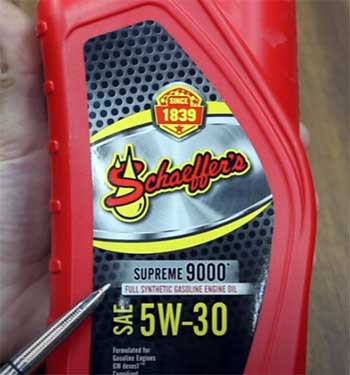
Choosing between Schaeffer and AMSOIL depends on your needs.
If you drive a diesel truck, heavy equipment, or farm machinery, Schaeffer’s affordability, robust additives, and diesel-focused formulations make it a fantastic choice.
I’ve seen it perform flawlessly in harsh conditions, and its price-to-performance ratio is hard to beat.
If you’re a performance enthusiast with a gasoline-powered car or powersports vehicle, AMSOIL’s superior base oil, extended drain intervals, and cold-weather performance make it worth the premium. Its environmental edge is a bonus if you care about sustainability.
For me, it’s a tie. I use Schaeffer in my diesel truck for its cost-effectiveness and durability, and AMSOIL in my Mustang for its unmatched performance.
You can’t go wrong with either, but consider your vehicle type, driving conditions, and budget.
Check your owner’s manual, talk to your mechanic, and maybe even run an oil analysis to see what works best for your engine.
Frequently Asked Questions (FAQ)
It depends on your needs. AMSOIL excels in automotive and powersports with superior base oils and extended drain intervalsწ
Schaeffer’s oil is better for diesel and heavy-duty applications due to its cost-effective pricing, robust additives like Micron Moly, and wide range of viscosity options suitable for harsh conditions.
Schaeffer’s Supreme 9000 and Mobil 1 are comparable synthetics, but AMSOIL’s PAO base oil and extended drain intervals set it apart for performance and longevity.
Schaeffer Manufacturing Co., based in St. Louis, Missouri, produces Schaeffer oil, with over 180 years of experience in lubricants.
Conclusion: Your Engine, Your Choice
You’ve got two stellar options in Schaeffer Oil and AMSOIL, each with unique strengths. Schaeffer’s affordability and diesel prowess make it a go-to for heavy-duty needs, while AMSOIL’s premium performance and eco-friendly edge cater to performance enthusiasts.
I’ve shared my experiences, from cleaner engines with AMSOIL to cost-effective durability with Schaeffer, to help you make an informed choice. Check your vehicle’s specs, consider your driving habits, and pick the oil that fits your needs.
Your engine will thank you for choosing quality, and you’ll enjoy the peace of mind that comes with it.
